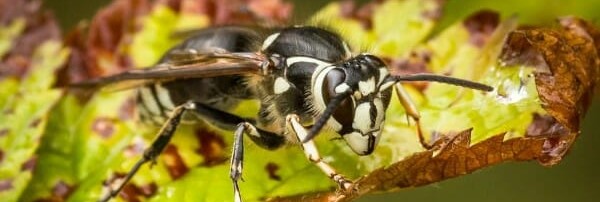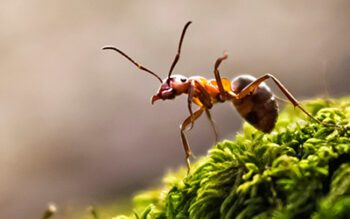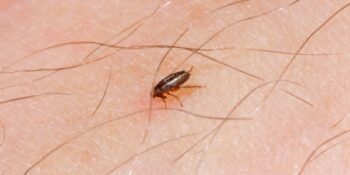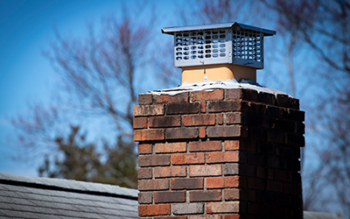
The many species of bees, hornets, and wasps are out in full force. Although these stinging insects are crucial to the ecosystem, they can be a nuisance to homeowners. Most bees, hornets and wasps sting multiple times, so keeping your home clear of these insects is important. Their stings pack a potent punch that many people are allergic to. It’s important to know what stinging pests you may be dealing with in the near future.
Protecting yourself and your home from these pests is important. If you have background knowledge of these stinging pests, you can better identify what you’re dealing with and establish what precautions need to be taken moving forward.
The following information will discuss the different stinging insects that you may encounter on Long Island today:
Carpenter Bees
Carpenter Bees are quite common on Long Island. They are often mistaken for Bumble Bees, which are around the same size and are similar in appearance. However, the Carpenter Bee is not nearly as social as the Bumble Bee. Carpenter Bees are normally ½ to 1 inch in length. Carpenter Bees are black and yellow in color. Most of the abdomen is black and hairless. This is one of the ways to differentiate Carpenter and Bumble Bees because Bumble Bees abdomen is covered in hairs and is mostly yellow in color. The male bee, which is most often around humans, is unable to sting. The female possesses a stinger but will rarely sting unless it’s agitated or provoked.
Carpenter Bees are generally known for building their nests in wooden areas, such as in trees or frameworks of buildings. An indicator of Carpenter Bees can be seeing bees hovering around the wooden framework of your home or seeing bees drilling holes in the wood. One of the main concerns for a homeowner dealing with these bees is the damage they cause to the infrastructure of a home. Similarly to Carpenter Ants, these bees will excavate the wood instead of eating it. They hollow out the wood for shelter or for a place to raise their young. Unpainted objects seem to be their main target when looking for areas to nest. Some of these objects include doors, chairs, windowsills, telephone poles, decks, and shingles. If you allow a colony of these bees to continually excavate through your home, they can cause some serious structural damage. Their defecation also can cause staining in the walls. Contacting a professional as soon as there are any signs of an infestation is crucial to saving your infrastructure. Fighting the problem early may help you save a large sum of money that the damage would cost.
Bald-Faced Hornet
The Bald-Faced Hornet is not actually a true hornet; it’s a species of yellow jacket. Bald faced hornets have been known to sting more than once at a time, making them increasingly dangerous. Keeping them away from your home is important for your safety, especially if you’re allergic. They’re a very identifiable insect based on the ivory markings on their face. Most of the body has these ivory white markings including the thorax and the abdomen. Their colonies will consist of 100 to 400 workers. Their nests are located in places off the ground including bushes, shrubbery, and trees. The nests are decently large in size, reaching up to 24 inches long and 18 inches wide. Bald-faced hornets are generally beneficial to the environment because of their ability to pollinate flowers.
When it comes to dealing with Bald-Faced Hornets, unless their nest is of close proximity to the building (within 10 feet or so), the nest can generally be left undisturbed. It’s important not to spray the outside of the nest with any pesticide because unless the nozzle of the spray is put directly into the nest, the process is ineffective. In fact, spraying the outside of the nest will just anger them, causing more issues. The best approach is to contact a trained professional that will perform the necessary and effective removal process.
Yellow Jacket
The Eastern Yellow Jacket is another stinging pest that’ll be seen on Long Island. Similarly to the bald faced hornet, their potent stings can happen more than once at a time. All the more reason to keep your living quarters clear of yellow jackets. They’re a ground nesting species that ranges across a vast portion of the U.S. Yellow Jackets get their name from the distinct yellow markings on their body. They are black in color with yellow patterns throughout their bodies. They’ve been known to sting people, so if you have a bee allergy it’s highly recommended to stay clear of these guys. Yellow Jackets will sting a lot of the time to defend their nests, so staying clear of the nests is a one way to avoid being stung. The nesting periods for the Yellow Jacket normally start in the late spring/ early summer months.
Although Yellow Jackets can be a pest to humans, they are considered to be good for the environment due to the fact that they help keep down the population of other insects, such as caterpillars and earwigs. This is why the nests can generally be ignored unless they are in close proximity to a building or ones home. If there is a nest in close proximity to your home or building, we advise you to contact a professional as soon as possible who will properly deal with the infestation.
Honey Bee
The honey bee is a very well known bee and is quite common throughout Long Island. Honey bees are a reddish brown and black color, with yellow rings on the abdomen. The honey bee is the only species of bee that produces honey. Honey bees live in large nests, called hives. The rulers of the hive are the massive queen bees, and the rest of the hive consists of thousands of males. Honey bees are generally docile, however if provoked they will sting. They have the ability to sting just once, but it still packs a potent punch.
Honey bees can become a nuisance when they come in close proximity to humans. They’ve been known to build nests in the walls of buildings and homes, which presents a problem for homeowners. Like many other bees, their stings can cause allergic reactions to people that in some cases are life threatening, so keeping them away from your home is important. When a large group of bees is swarming around your home, try to keep a safe distance and contact a professional as soon as possible. Dealing with a colony of honey bees is dangerous work. Hire a pest management professional to get rid of bees.
Cicada Killer
Cicada Killers are a species of wasp that is located throughout much of the U.S. They get their name from their ability to paralyze cicada, take it to their nest, and feed them to their young. They normally live in underground borrows that they excavate over time. These sights are normally located in well soiled areas that are near cicada populations. These sights also tend to be in non vegetated areas. They’re black in color with yellow markings, similarly to the Yellow Jacket. The females have a large stinger that can definitely pack a punch, but they are generally docile. Males however don’t have a stinger, but are much more aggressive and territorial even though they can’t cause any harm.
For the most part, the only damage cicada killers can do is move around large quantities of soil. If you believe you have a cicada killer infestation in your lawn or other soiled property, contacting a professional would be the best approach.
Digger Bee
Digger bees are another species of wasp that you may encounter on Long Island. They are a solitary bee that inhabits soiled areas where they construct their nests. Digger bees often nest near each other due to their specific nesting habits, however they are not considered to be a social insect. People sometimes believe they live in colonies because of their close proximity. This can present a problem when looking to get rid of digger bees because what appears to be a colony is actually many individual bees in many different nests. Most bees and wasps are located in one nest, making it easier to pin point the source.
They tend to be a non aggressive insect that will only sting in a provoked situation, but males cannot sting altogether. To prevent digger bees from building nests in your backyard, it’s important to keep your soil well watered, as they prefer a dryer environment. Although digger bees many seem menacing, they are generally considered good for the environment and harmless to people. If you would like to rid your yard or other area of digger bees, contact a professional who will assist you.
On Long Island, call Suburban Exterminating for professional pest control services. Suffolk County 631-864-6900 and Nassau County 516-864-6900





